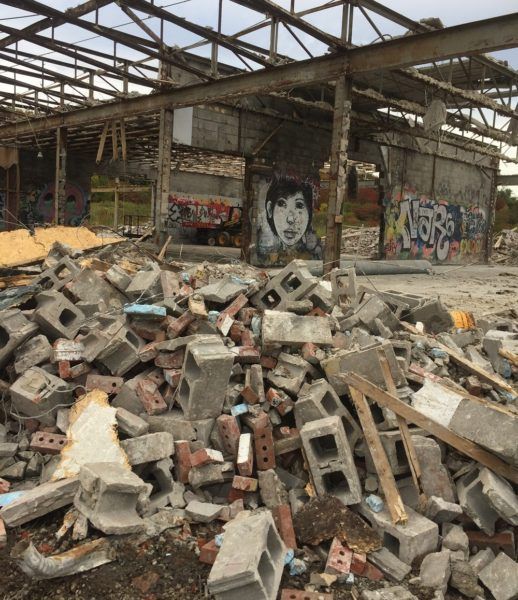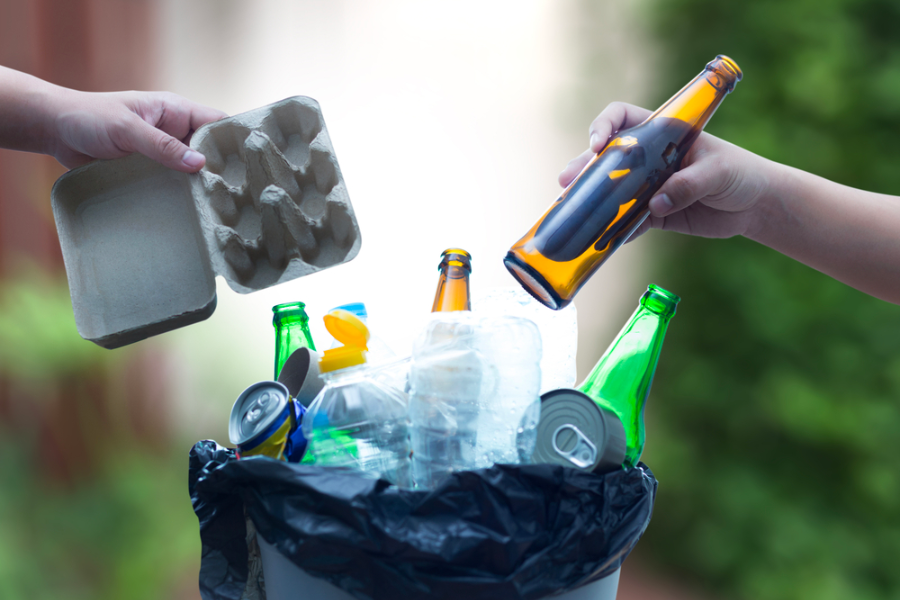Using Reclaimed Materials in Your Home & Yard
December 10, 2019
This guest blog was written by Sarah Lozanova, and originally published on Earth911.
When most of us think of landfills, we think of rotting disposable diapers, apple cores, and old clothing. In fact, the U.S. generated 548 million tons of construction and demolition waste in 2015, according to the U.S. Environmental Protection Agency. This waste stream comprises more than double the amount of municipal solid waste generated annually.
A lot of wood, concrete, bricks, glass, asphalt, and plastic are going to landfills instead of being recycled or reused. This creates a massive opportunity for improvement. Repurposing materials is a great way to reduce the ecological impact of a project. Demolition waste can be artfully repurposed in home remodeling, construction, and landscaping projects, adding beauty and charm. Reclaiming waste also helps you save money, as many people go into debt when constructing and remodeling homes.
Plan Ahead
Reclaiming materials typically takes more time than just buying new items. And it requires more planning.
It is challenging to take a cookie-cutter approach to salvaged materials. When constructing or remodeling your home, you may need to customize it to the available materials. One method is to analyze what materials are available and then plan your project design accordingly. The opposite approach is to design your project and then collect the needed reclaimed materials. When taking the latter approach, it is helpful to rely on salvaged materials that are more commonly available.
Regardless, planning ahead and having plenty of storage space is helpful.
Find Good Sources of Salvaged Materials

One of the easiest ways to find free materials and to prevent them from going to landfills is to visit demolition sites. This can be a great source of windows, doors, woodwork, fixtures, and even appliances. Construction sites can be excellent sources of surplus or slightly damaged materials and supplies. Construction dumpsters are often packed with useful materials.
It is essential to speak with the foreman to get permission before taking any materials. If you are seeking something specific, ask the contractors working on-site if they have found that window or door you want. They might be willing to set materials aside for you. But again, ask for permission first.
Antique malls, architectural salvage stores, and home improvement donation centers are good sources of anything from windows and doors to hardware, tile, and plumbing fixtures.
Habitat for Humanity ReStore is another valuable source of new and used building materials, and the proceeds benefit a good cause. There are also a variety of websites that can be useful, including Reusewood, Craigslist, Freecycle, and Facebook Marketplace. Some people even purchase properties with reclaiming the materials in mind. For example, old barns are filled with gorgeous weathered lumber that can be deconstructed and repurposed.
Utilize Repurposed Materials

Beautify your home with reclaimed and repurposed wood beams and ceramic tiles. Use cleaned-up bricks recovered from construction debris to create patios, pizza ovens, and pathways, and other attractive features for your new home. Repurpose shipping containers to make storage sheds. Or stack them to make multi-tiered structures, like a guest room. Use crushed concrete as aggregate for walkways and driveways. Sinks, vanities, bathtubs, cabinets, shower stalls, light fixtures, and even toilets can be repurposed.
Find Supplies with Recycled Materials
There are also some construction materials available on the market made from recycled materials.
Plastic bottles are recycled to make composite lumber or bricks, and recycled glass is made into tile and countertops. Old newspapers or blue jeans are made into insulation products, and cork bottle stoppers can make flooring and panels. Purchasing these materials might not be as economical but it does conserve resources.
Using salvaged materials in construction and renovation projects adds character and is a great way to reduce waste. And having an eye for reuse helps conserve precious resources and protect the environment.
Disclaimer: Guest blogs represent the opinion of the writers and may not reflect the policy or position of the Northeast Recycling Council, Inc.
Share Post





